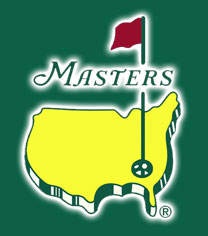 at the Masters. It was worth every penny.
at the Masters. It was worth every penny.
My father and I had the good fortune of winning tickets to attend a practice round at the 2008 Masters Golf Tournament in Augusta, GA. The tradition-rich golf tournament is so popular with fans that a waiting list for tickets to see the actual tournament was opened in 1972 and closed in 1978, with a short re-opening in 2000. Tickets to attend the practice rounds are allotted via lottery to those mailing in applications a year prior to the tournament.
Upon being notified of our good fortune, I happily mailed my $36 check to the tournament officials (OK, so dad sent the check in) and eagerly made plans to travel for this annual rite of spring in Eastern Georgia. Each year millions of golf fans mark the arrival of spring with the perfectly manicured golf course, the blossoming azaleas, dogwoods and wisteria, and the re-emergence of our sporting heroes after a long winter. As early as age 5, I can remember watching young Seve Ballesteros winning the 1980 Masters and was awed as much by the garden-like grounds as I was with the Spaniard’s aggressive play. To actually have a chance to walk the course was a dream come true.
And to think it only cost me $36 to gain entry to the course! In the era of $2,500 baseball tickets this seemed to be the bargain of bargains. Or was it? On the drive down Washington Road, we noticed dozens of ticket resellers aggressively soliciting passengers to sell their tickets to them. Out of curiosity, we stopped to ask several how much our tickets might fetch on the “open-market.” Our best guess was that we could have gotten $500 for each ticket – that is $464 more than we paid for each ticket! Yet we never seriously considered the offers.
While walking the course later that morning, I told my dad that he just spent $500 to see a practice round at the Masters. To this he was indignant, “I spent only $36.” But dad refused to think about the concept of opportunity cost. Any economic action that is taken by an individual involves tradeoffs – in other words, the cost of taking one action is all of the other actions you do not take as a result. By refusing to sell the ticket for $500, we each made the implicit decision that the benefit of seeing the pristine and hallowed grounds of the Augusta National Golf Club was greater than $500, or greater than all of the other things we might have done with $500 at that time.
By focusing on whether the $500 was spent out of pocket, we were focusing on the effect that is easily seen at the expense of the effect of what was not easily seen. I asked dad again, “If we were not already in possession of a ticket, would you pay $500 to attend the Masters practice round?” An emphatic, “no” followed. But this behavior is seemingly irrational. When we are not in possession of a ticket, we are saying that it is not worth $500 to go to the Masters. But when we have possession of the ticket, and refuse to sell it, we are acting as if we value attending the Masters at more than $500.
There are economists working in a field called behavioral economics that would use our inconsistent behavior as evidence that the rational behavior assumed to underlie traditional economic models is nothing more than a charade. If people value things they already have more than they value things that have yet to be acquired, even if it is the same item at the same price, does this mean that traditional economics should be tossed aside?
For a variety of reasons I do not believe so. Every individual makes economic decisions to maximize his own subjective well-being. No single model of behavior can correctly predict the actions of every actor, nor can it even understand what it is that makes each actor most well-off.